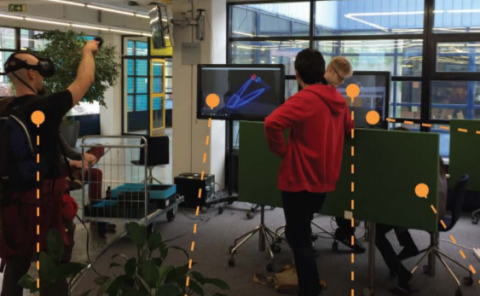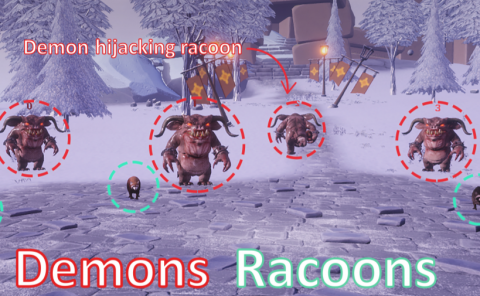Sparse Haptic Proxy: Touch Feedback in Virtual Environments Using a General Passive Prop
Title: Sparse Haptic Proxy: Touch Feedback in Virtual Environments Using a General Passive Prop
Teams: Microsoft
Writers: Lung-Pan Cheng Eyal Ofek Christian Holz Hrvoje Benko Andrew D. Wilson
Publication date: May 2017
Abstract
We propose a class of passive haptics that we call Sparse Haptic Proxy: a set of geometric primitives that simulate touch feedback in elaborate virtual reality scenes. Unlike previous passive haptics that replicate the virtual environment in physical space, a Sparse Haptic Proxy simulates a scene’s detailed geometry by redirecting the user’s hand to a matching primitive of the proxy. To bridge the divergence of the scene from the proxy, we augment an existing Haptic Retargeting technique with an on-the-fly target remapping: We predict users’ intentions during interaction in the virtual space by analyzing their gaze and hand motions, and consequently redirect their hand to a matching part of the proxy. We conducted three user studies on haptic retargeting technique and implemented a system from three main results: 1) The maximum angle participants found acceptable for retargeting their hand is 40°, with an average rating of 4.6 out of 5. 2) Tracking participants’ eye gaze reliably predicts their touch intentions (97.5%), even while simultaneously manipulating the user’s hand-eye coordination for retargeting. 3) Participants preferred minimized retargeting distances over better-matching surfaces of our Sparse Haptic Proxy when receiving haptic feedback for single-finger touch input. We demonstrate our system with two virtual scenes: a flight cockpit and a room quest game. While their scene geometries differ substantially, both use the same sparse haptic proxy to provide haptic feedback to the user during task completion.



